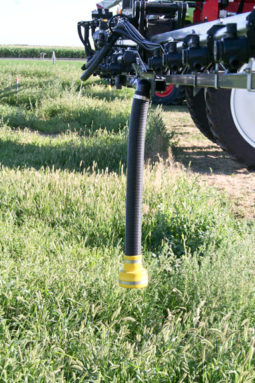Approximately 66-77 percent of all growers who spray pesticides spray too much or too little, which not only can waste money, but also cause crop losses, said Erdal Ozkan.
He said growers need to inspect sprayers for proper gallons-per-acre application rates and calibrate them early and often.
"If you don't calibrate your sprayer frequently, it's as if you were driving your car with a speedometer that doesn't work," said Ozkan, who also is a professor in the Department of Food, Agricultural and Biological Engineering and a researcher with the Ohio Agricultural Research and Development Center.
"You assume you know what speed you are traveling at from habit, but you are not really sure. The problem with a sprayer is that nozzles wear out with use, application rates change with different field conditions, and traveling speeds also change. Many growers don't take these factors into account."
Data from Ohio and other states indicates that only one out of every three or four applicators applies chemicals at rates that are within 5 percent (plus or minus) of the intended rates.
Application rates within plus or minus 5 percent represent the accuracy level recommended by the U.S. Department of Agriculture and the U.S. Environmental Protection Agency.
Surveys also indicate that 67 percent of applicators who calibrated their equipment before every spray application had application errors below 5 percent, Ozkan said. Conversely, only 5 percent of applicators who calibrated their equipment less than once a year achieved the same degree of accuracy.
Ozkan said growers should calibrate their sprayers in early spring and every time operating conditions (different ground surfaces, for example) change or a different type of chemical is to be used.
"Frequent calibration is even more important with liquid applications because nozzles wear out with use, increasing the flow rate and leading to overuse of chemicals, which impacts growers' budgets and can lead to crop damage and contamination of groundwater and the environment," Ozkan explained.
Calibrating a boom sprayer, he said, usually doesn't take more than 30 minutes, and only requires three tools: a watch showing seconds, a tape measure and a jar that measures ounces.
The ultimate goal is to calculate the actual rate of application in gallons per acre to check for accuracy and make adjustments as needed.
Click here to learn how to make these adjustments and find additional information about sprayer calibration. FG
—Ag Answers newsletter, March 2012










